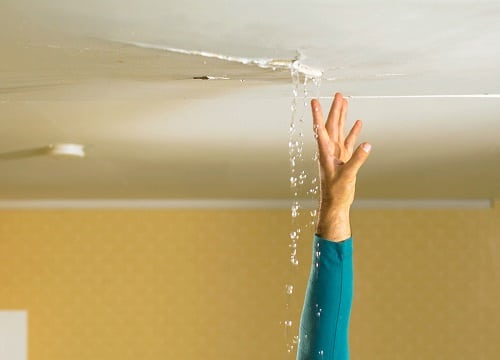Solving Water Leaks Is Not An Easy Job

Fixing water leaks is always a tough job.
Getting to the root cause and then finding a solution to rectify the problem is no easy task.
Lack of understanding about structural issues as well as waterproofing methodology/technologies can lead to rectification decisions that may not actually resolve water ingress.
There are often several remedial options possible, which is best? And of course, cost may be a significant consideration when choosing the rectification method.
However, in my experience of over 42 years within the construction industry as both a Registered Building Practitioner (Domestic and Commercial) and Certified Waterproofer, choosing the correct rectification method will “pay off” in the end. Combining construction and waterproofing experience does provide some structural insight into water ingress problems.
Leaking Roofs
I have witnessed diagnoses of roof water leaks as a waterproof membrane issue when in fact it is due to a plumbing problem and/or structural and design faults.
Most of the time when we are called in to rectify a leaking roof, we are dealing with older buildings with a membrane at the end its life cycle. Very often roof membranes have been patched up over many years to stem intermittent water leaks, though eventually it becomes unviable and unmanageable to keep spending money on fix ups. Sometimes it is possible to carry out temporary rectifications work and move the actual fix date to a later time due to lack of funding or weather preventing a desired outcome.
However there comes a time when money must be spent and spent well – rectification that meets performance criteria in terms of lifetime service, leak resistance, weathering performance is required.
A frequently asked question regarding rooftop waterproofing – can the existing surface be re-waterproofed or does the damaged membrane need the costly and time-consuming option of removal?
This is particularly relevant for rectifying leaking “busy” roofs, i.e. with mechanical installations, rooftop plant deck equipment etc. Often it is impossible to remove the existing membrane and the only option is an overlay method. Sourcing the root cause of water leaks goes a long way to help establish the best course of action and methodology required. There are many different types of waterproof membranes on the market to meet various demands.
Leaking Balconies
Fixing leaking balconies are a completely different matter.
Many balconies leak due to poor design, inferior construction materials and methods, incorrect waterproof application, and failed balcony finishes. Many in construction are unaware of the relationship between balcony tiling, design, and water leaks.
If tiles are installed incorrectly on a waterproof membrane, this can cause a perfectly good membrane to leak. Tiles expand and contract due to the normal thermal cycle, darker tiles expand more. Tiles should be bonded to the waterproof membrane. Constant expansion and contraction can play havoc if the membrane used is not flexible enough to withstand this movement.
There are structural components to cope with this movement. Expansion joints, or lack of, are a common cause of balcony leaks – and not due to a failed membrane. If tile adhesive is too rigid, together with a membrane lacking flexibility, balcony cracking is very possible. And with cracks, eventually water ingress occurs.
Water stops – which are an impervious angle installed on the balcony perimeter to prevent movement of water to an adjacent area or surface – are used in most Australian states though amazingly but not so much in Victoria.
Trying to resolve a leaking balcony by installing a new membrane without addressing “other” non waterproofing issues is futile – you will be looking at water leaks in the future all over again. And so, the cycle of a leaking balcony goes on.
Current apartment construction often involves balconies designed with a minimal fall. These designs mean a waterproofing membrane is applied to a flat (level) concrete or timber framed surface, and cement screed is applied to achieve falls for water to flow to drainage systems – we hope!
Water leaks and problems can occur if a membrane is installed “only” to the level of the balcony surface, and water cannot run-off. If water does not flow as required into drainage, the tile screed or adhesive can become saturated and cause emulsification.
The aim of remedial waterproofing and rectification is to ensure water leaks is not perpetuated.
It is important when resolving water ingress into buildings, to investigate structure and design as well as the actual waterproofing status. Investigation and correct assessment of the root cause of water leaks is critical – otherwise water ingress will not be solved and deferred to a later time and start again.
Resolving water leaks requires gathering information about a broad range of building issues – waterproofing being just one. As always, I am available for discussion on this and other waterproofing topics.
By Paul Evans, President, Australian Institute of Waterproofing & Managing Director of Findlay & Evans Waterproofing
Note: This blog was originally posted on Sourceable.net.
Tags: Construction

